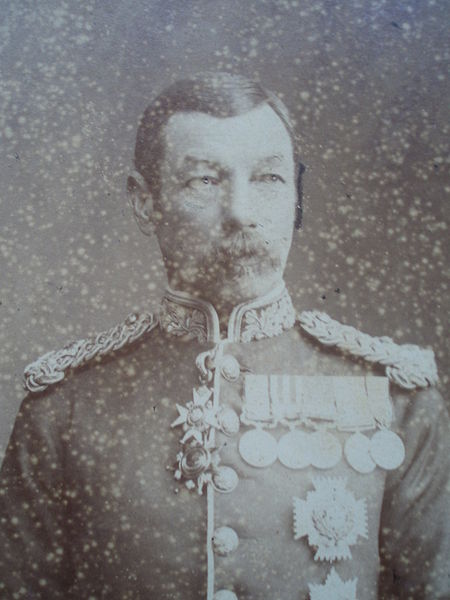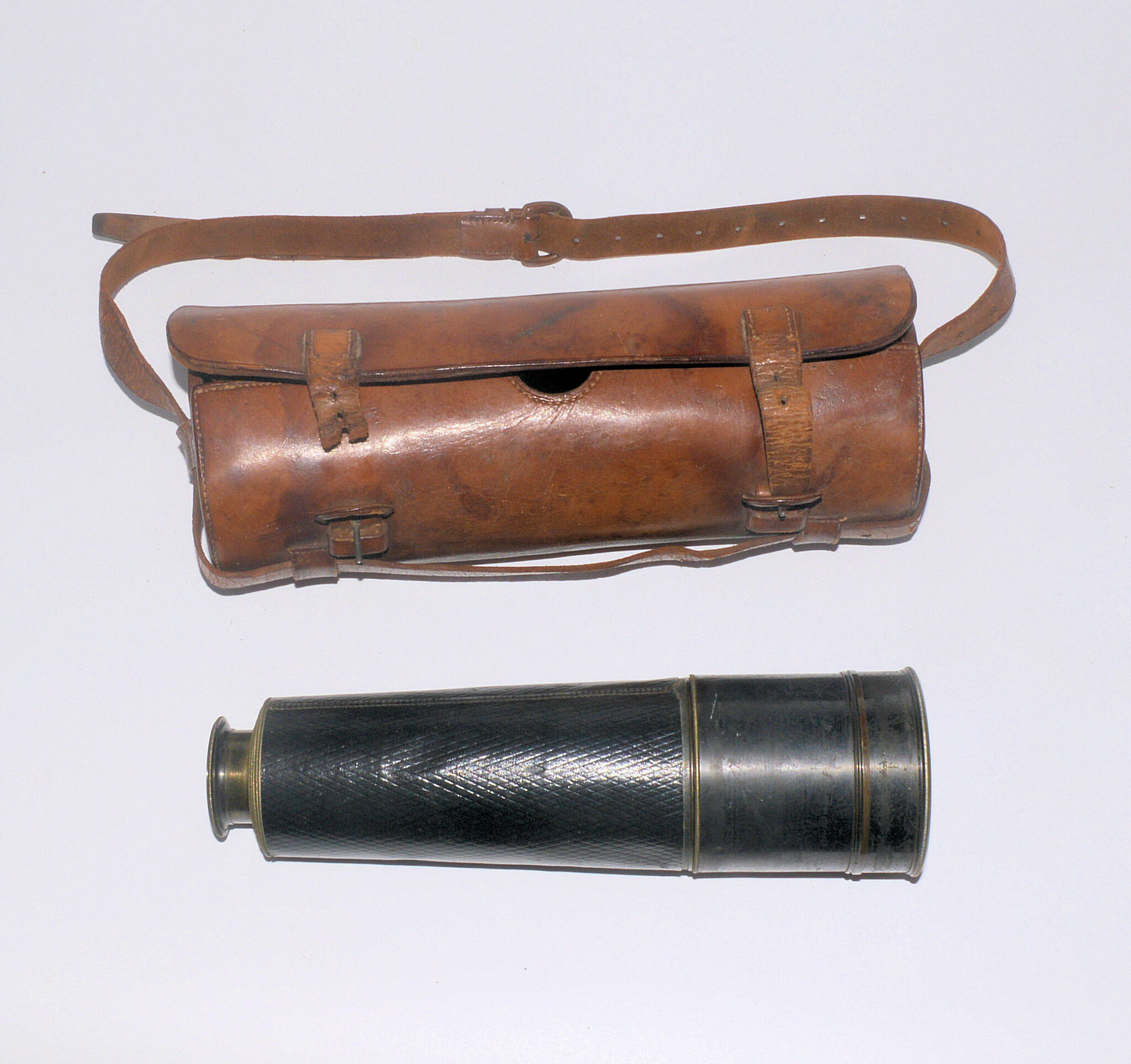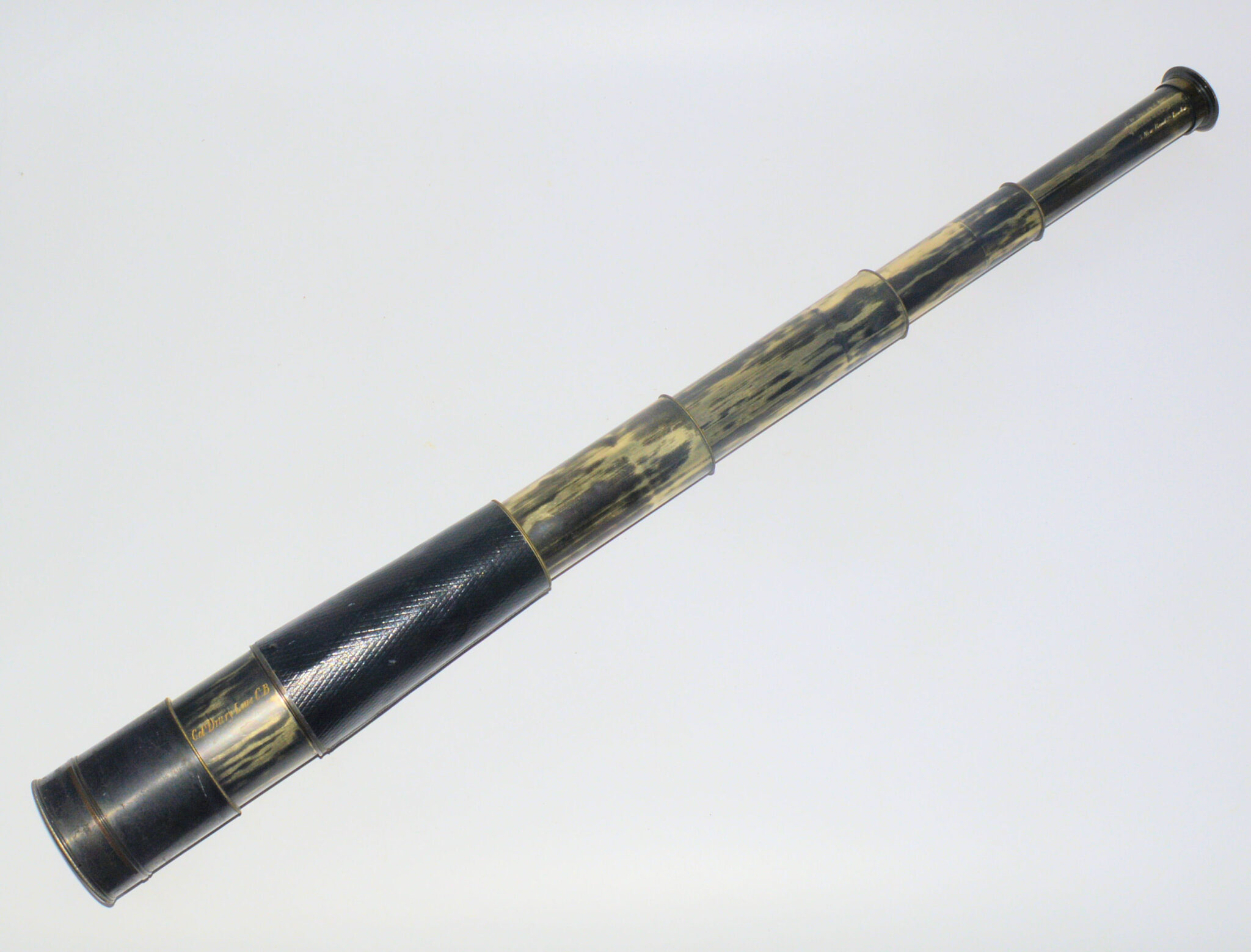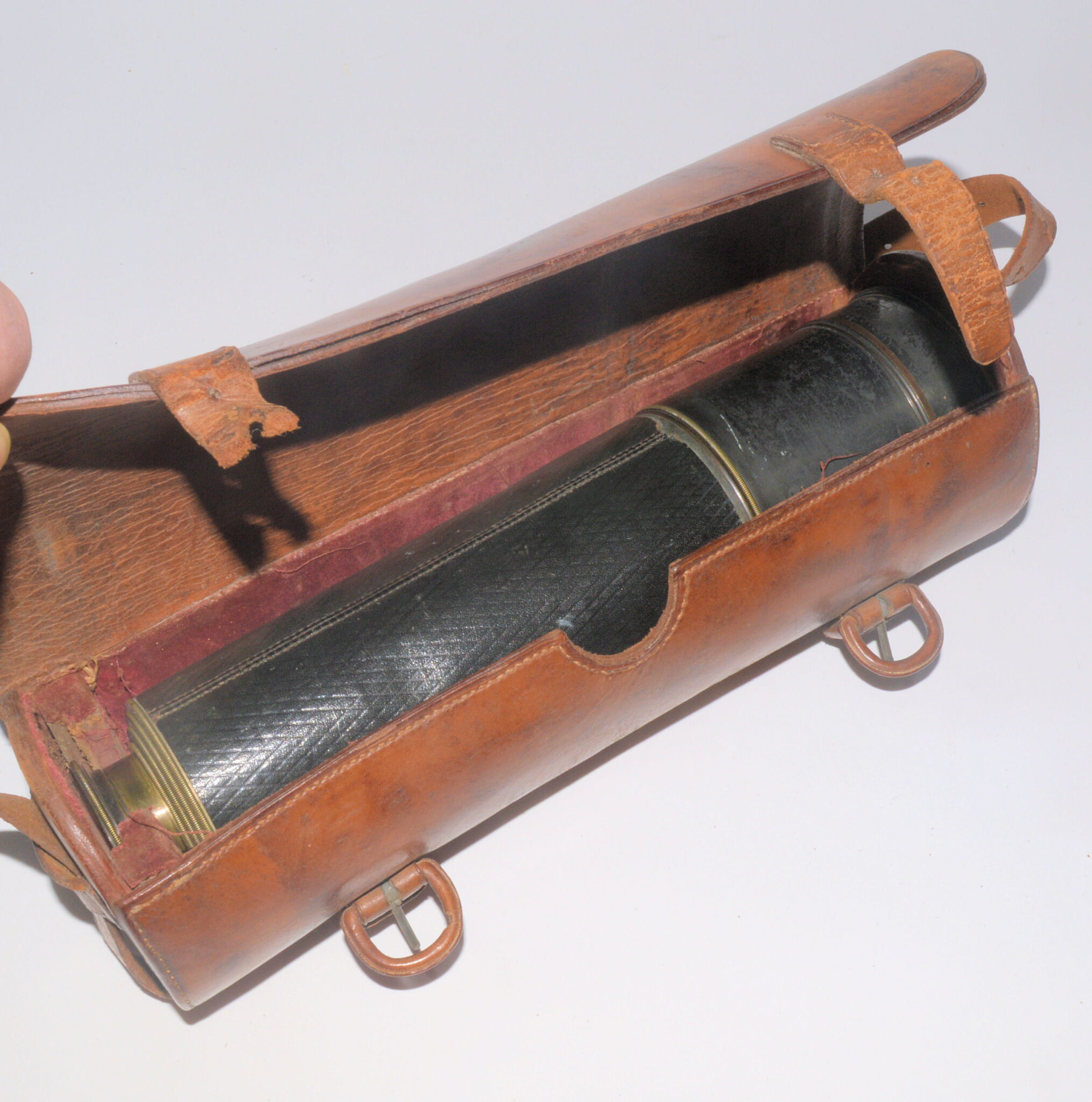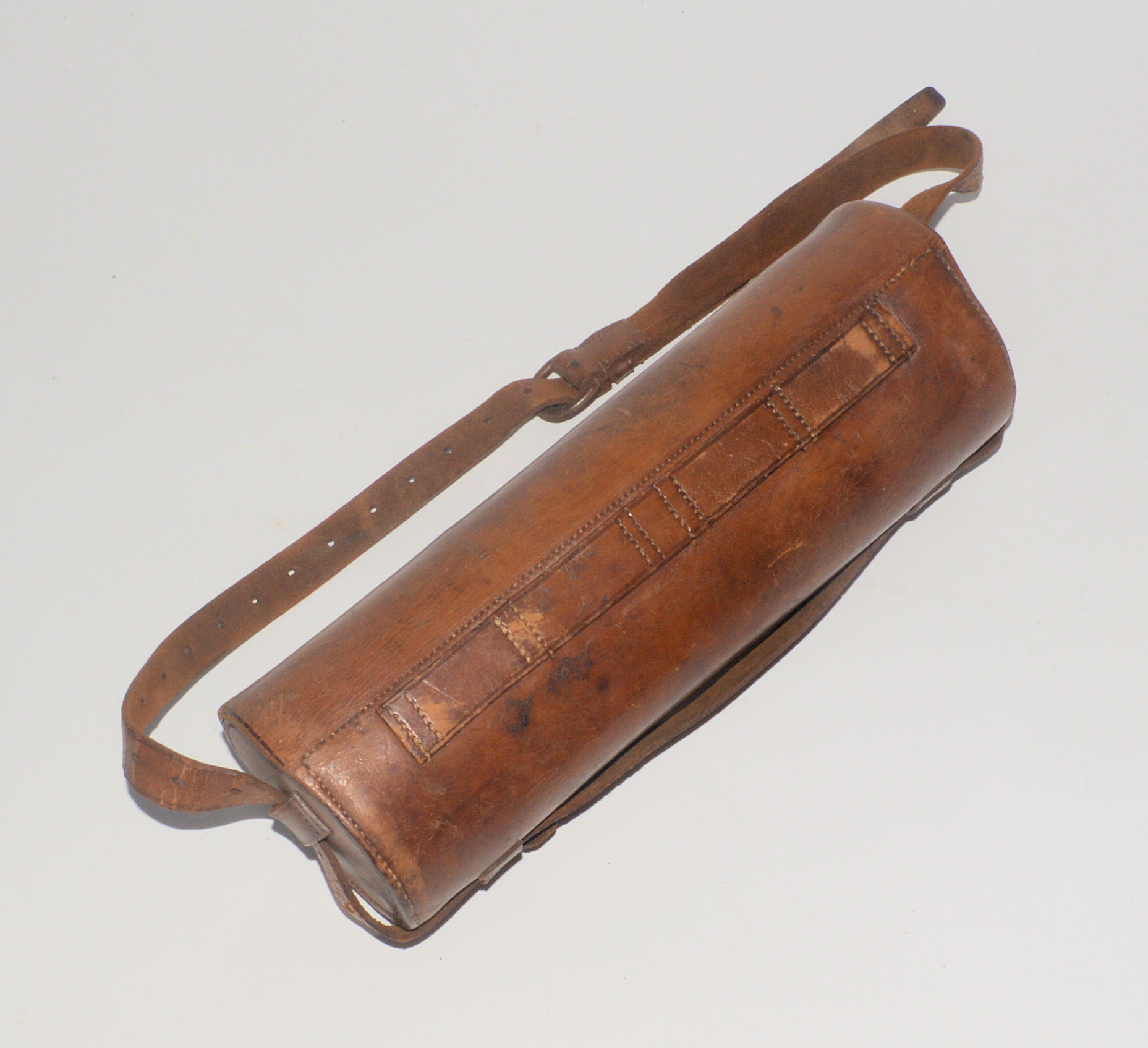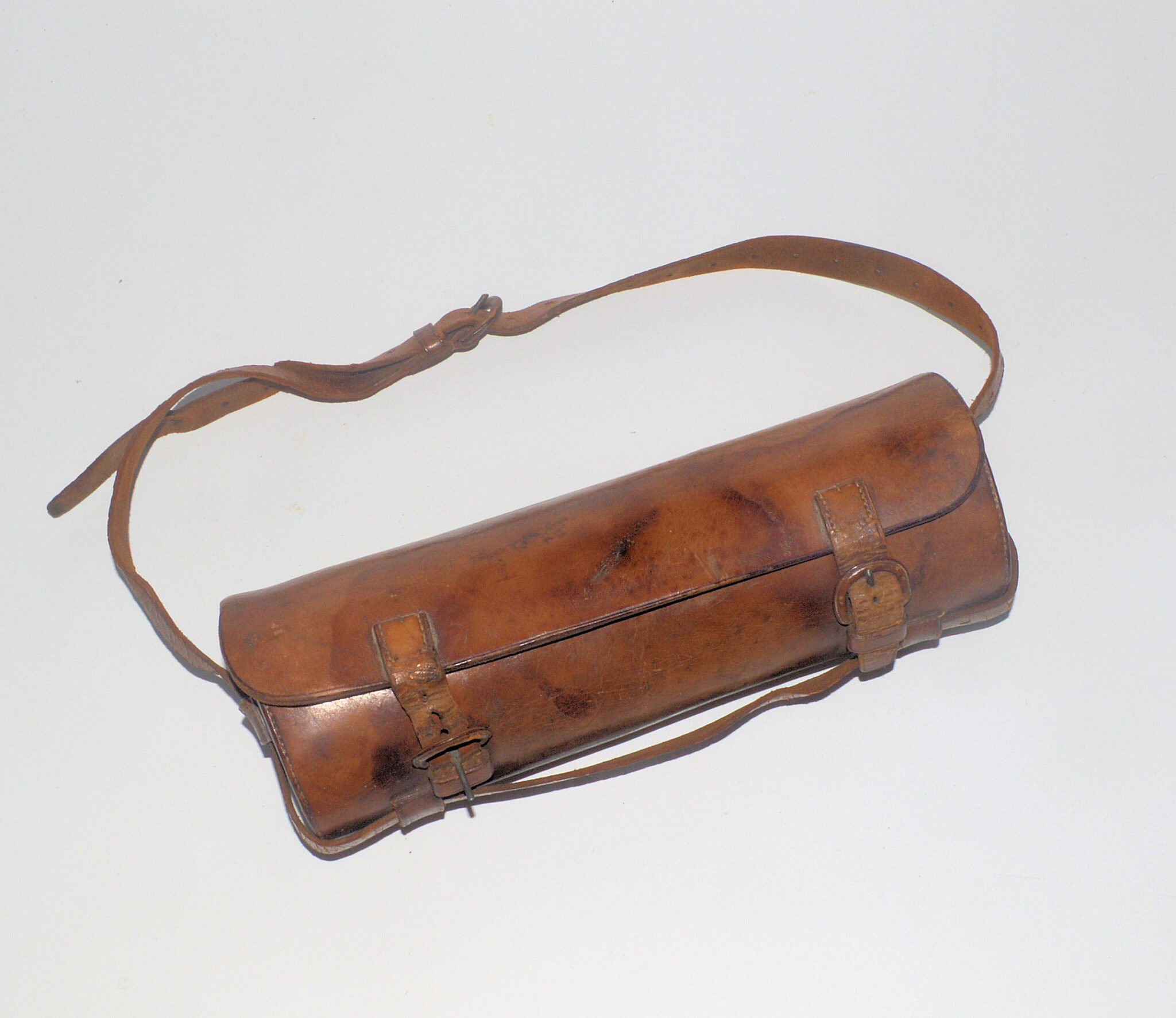Description
SOLD – A four draw brass telescope with blackened nickel silver draws, the first draw engraved, ‘C.W. Dixey & Son. Optician to the Queen. 3 New Bond St, London’. Also engraved behind the sun visor, ‘Col. Drury Lowe. CB’.
The telescope measures just over 10 inches long and pulls out to 36 inches with a main lens aperture of 2.25 inches. It has a black leather cover to the taper barrel, lens cap and slide cover to the eye piece.
The draws are smooth and firm and the telescope gives excellent views. Lenses are clear and damage free, the main lens has a tiny scratch (hardly visible) and does not affect the viewing.
The telescope comes in its original fitted, lined, brown tan leather case with 2 fastening straps and shoulder sling (one fastening strap partially detached).
_____________________
Drury Curzon Holden was the second son of William Drury Holden and was baptised at Aston-on-Trent, Derbyshire. From 1849 he was known as Drury Curzon Lowe, following his father’s assumption of the name and arms of Lowe on inheriting the Locko estate.
Drury was educated at Corpus Christi College, Oxford, graduating in 1854. The following year he joined the 17th Lancers as a Cornet. He attained the rank of Lieutenant in November 1854 and Captain in November 1856. In 1855 he went to the Crimea. He fought at the Battle of the Chernaya and was at Sevastopol for its fall. In 1858-1859 he served in India and was mentioned in dispatches. He purchased a commission as Major in 1862, and was promoted to Lieutenant-Colonel in 1866. Sometime between 1862 and 1867 he assumed the surname Drury-Lowe in place of Lowe.
He retired in 1878 but when his successor accidentally shot himself in the foot the following year, he was brought back into the command of the 17th Lancers to serve in the Anglo-Zulu War. The 17th Lancers made a charge at the battle of Ulandi, which was their first action since the Crimea. Lowe had just ordered the charge, when he was struck on the back by a spent bullet, but it hit his leather belt and although it felled him from his horse, he quickly re-saddled and followed the charge. He was sent back to South Africa in 1881 to command the Cavalry Brigade in the Transvaal in 1881, and was promoted as Major-General.
The Egyptian campaign of 1882 was the peak of Drury-Lowe’s military career. He was in command of the cavalry at the capture of Mahsama, and led the night-time cavalry charge at Qassasin. After the battle of Tel al-Kebir he led the cavalry to occupy Cairo, and received the surrender of Arabi Pasha. He was publicly thanked in the House of Commons, and knighted on 18 November 1882.
After Egypt, Drury-Lowe returned to Britain. He was appointed as the commander of the Cavalry Brigade at Aldershot, and from 1885-1891 was Inspector-General of cavalry. He was promoted to Lieutenant-General in 1890. He became Colonel of the 17th Lancers in 1892. He retired in 1895 and was awarded the G.C.B. He spent his latter years at Key Dell, Horndean, Hampshire, and was buried at Denby.
